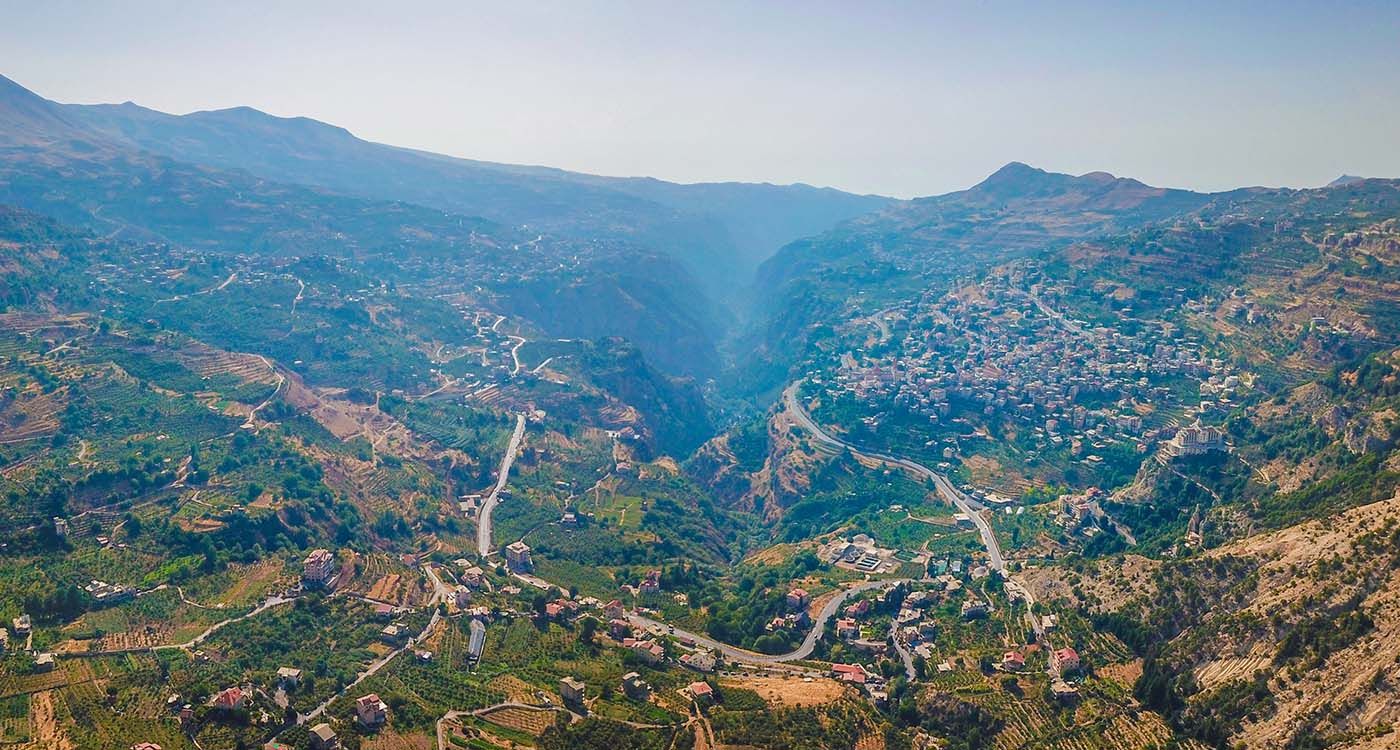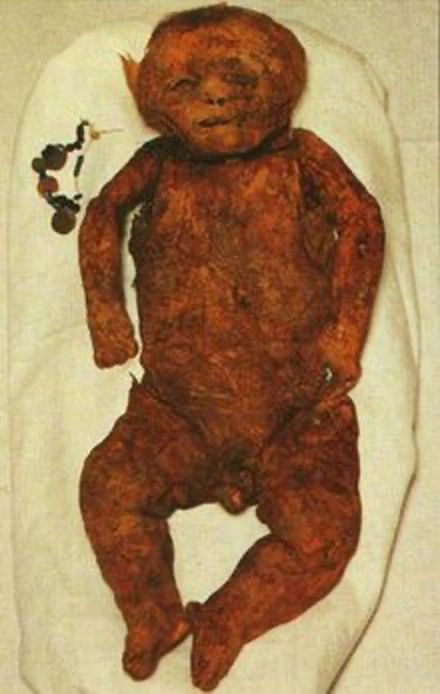
In the latter half of the 13th century, Mamluk armies attacked the villages of Qadisha. The residents of Hadat sought refuge in a remote cave, which ultimately fell to the enemy in 1283. Known as Assi, the cave was later found to contain numerous bodies, including eight that were naturally mummified.
The Maronite mummies were discovered in the Qadisha Valley on July 13, 1990, by a team of speleologists from the Group for Subterranean Studies and Researches of Lebanon (GERSL). The team included Pierre Abi Aoun, Fadi Baroudi, Antoine Ghaouch and Paul Khawaja.
After two years of exploration and excavation in the Assi cave, located in the Hadat area of the Qadisha Valley, they uncovered their first mummy—that of a four-month-old girl, whom they named Yasmine. In total, they unearthed eight mummies: five children and three adults, and several skeletons.

The mummy of Yasmine at the National Museum of Beirut. (Photo GERSL)
The Mummies
The eight bodies had been naturally mummified by the cave’s unique environment, characterized by a complete lack of humidity. The dry soil in which they were buried contained no microorganisms—normally essential agents of decomposition. This effectively formed a sealed casing, preventing the air circulation needed for decay.
During the restoration and reopening of the National Museum of Beirut, Fadi Baroudi bared the responsibility on his own fess of safeguarding this treasure during the unstable post-war years. Plexiglass sarcophagi were built, silica gel was added to absorb moisture and, most importantly, an uninterrupted power supply was maintained for the electric dehumidifiers. It wasn’t until 1995—five years later—that the mummies were finally transferred to the National Museum.
In keeping with the customs of the Middle Ages, both in the Levant and in the West, the young girl Yasmine had been shielded from the winter cold by multiple layers of clothing. Beneath her shroud, she is dressed in a blue gown, layered with two beige garments, the outermost being darker and adorned with silk thread embroidery. A silk headband secures her hair, which is further covered by a linen headdress. Yasmine also wears jewelry indicative of her social status. Along with her earring, her necklace of blown glass beads features two coins dating from the reign of Mamluk Sultan Baybars (1260-1277).
The Mamluks
The Mamluks launched their campaign from Egypt, systematically conquering the Latin states of the Levant, one by one—duchy by duchy, lordship by lordship. From the Kingdom of Jerusalem to the County of Edessa and the Principality of Antioch, nothing could halt the relentless advance of the Mamluk armies, except the County of Tripoli. Its fortified cities, deeply entrenched in the Maronite stronghold of Mount Lebanon, withstood their attacks.
The people of this region made up the bulk of the Crusader armies. In Book XXII (Chapter VIII), Archbishop William of Tyre described them as “a people called Suriens (Syriacs), who dwell in the land of Phoenicia, near Lebanon, beside the city of Byblos… They were bold and valiant in arms, often providing great support to our Christians when they fought against our enemies.” To conquer Tripoli, it was essential to breach the Christian stronghold, and the local population had to be eliminated.
The genocide initiated by the Mamluks began in 1260 and lasted until 1289, devastating the entire region of Gebbet, including its capital Bsharre, as well as Hadat, Hasroun, Bqoufa and the other villages of Qadisha. Nothing was spared: from the largest towns to the smallest caves where people had sought refuge, and even the humblest hamlets, all were reduced to ashes.
The extermination did not end there. A second wave of ethnic cleansing occurred from 1305 to 1307 in Kesrouan, which at the time included the area of Metn. Once again, in 1367, the Maronite patriarch Gabriel of Hgoula was burned alive in the main square of Tripoli.

The mummies of Maryam and Sadaqa (Photo: Lebanon Untravelled)
The Attack
To better understand the historical events surrounding the mummies’ discovery, members of the GERSL examined ancient Maronite Syriac manuscripts as well as Muslim documents from the Mamluk era. All accounts describe a brutal and decisive attack. The researchers particularly referenced the Arab historian Ibn Abed-al-Zahir (1223-1292), who chronicled the bloody events of the time.
The historian recounts the capture of a Maronite patriarch at Hadat, who had been in conflict with the Franks. He describes how “the Turkmen deceived him by capturing him, blindfolding him and taking him prisoner.” He further adds that “the Muslims were freed from him and spared from his wickedness.” The important significance of this Maronite patriarch becomes clear later, when the Arab historian compares his capture to a major victory—one even greater than the conquest of a fortified town or fortress.
This attack is also referenced by the Maronites in the marginal notes of two Bibles discovered in the 17th century by Patriarch Estephanos Douaihy at the Monastery of Mor-Aboun (now Saint Anthony of Qozhaya). One note, dated 1283, was written by an anonymous eyewitness. The manuscript in the second Bible, dated 1504, simply reiterates the details from the original 1283 text.
In line with the account of the Arab historian, this Maronite source further reveals that “on August 22, 1283, the Muslim soldiers moved toward Hadat, where the residents had taken refuge in a cave.” This cave, known as Assi, preserved a crucial chapter of our history, keeping it intact in its mummified form, with its vibrant colors and the intensity of its suffering. This cave in the Qadisha Valley chose to awaken our past and allow it to speak to us.


Comments